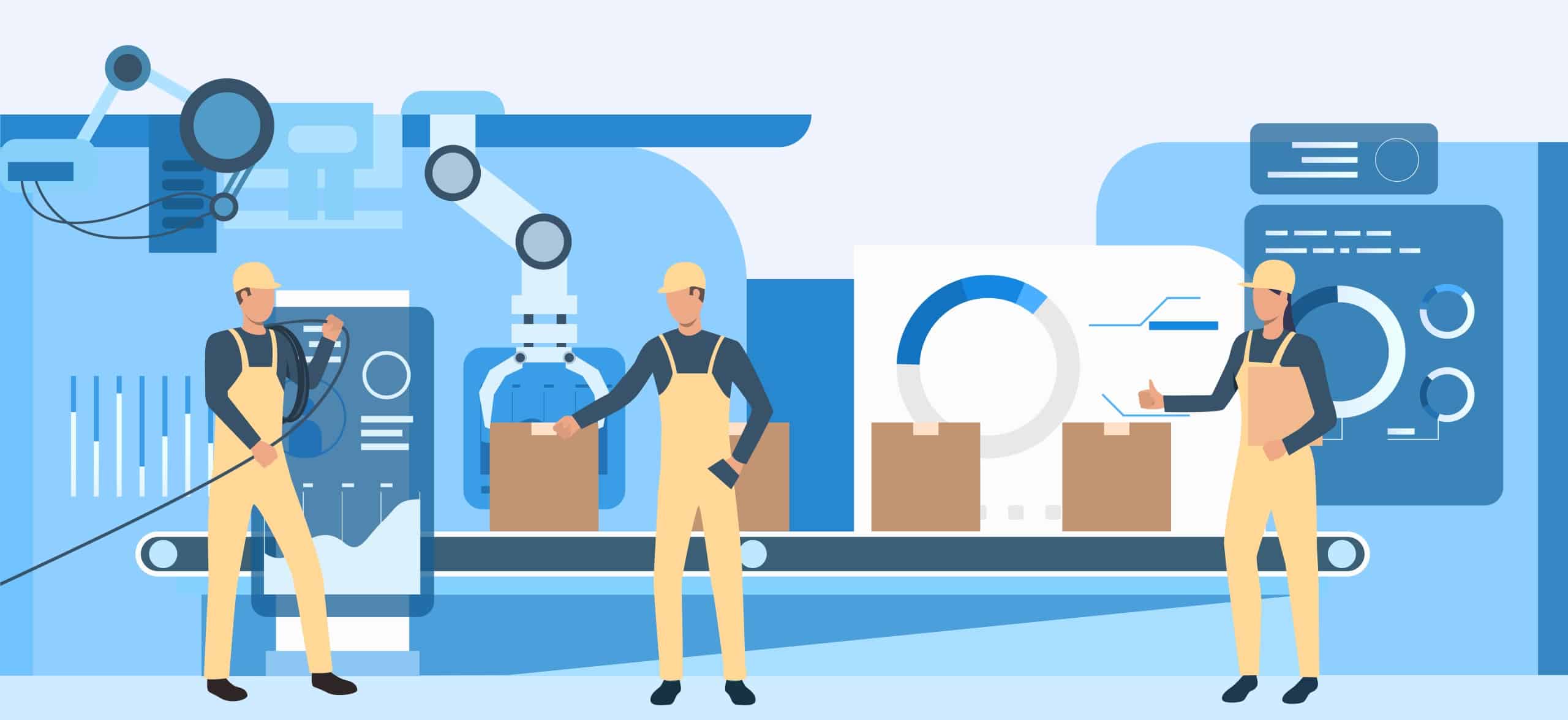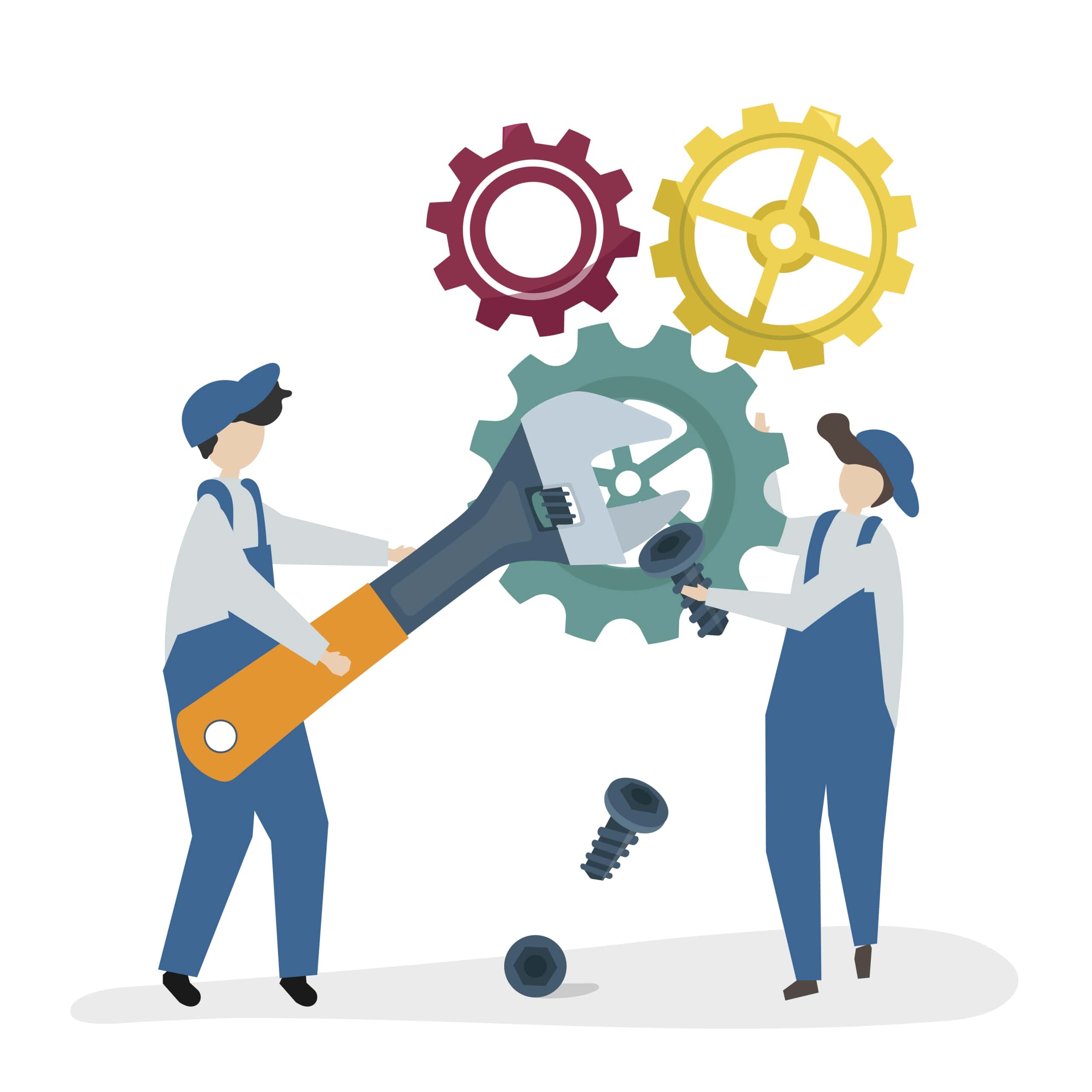1. Understand Your Market and Product Line
A defined product line and a deep grasp of your target market are the cornerstones of selecting the best wet wipes machine. Every market niche has its own distinct set of needs, customer expectations, and legal requirements, whether it be personal hygiene, industrial, domestic, or infant care. Selecting the machine characteristics that best suit your objectives and your client’s needs will be made easier if you know which particular market you want to serve. Baby wipes, for example, often need to be hypoallergenic, mild, and made with substances that are suitable for delicate skin. Machines that can handle soft, non-irritating materials and have characteristics that guarantee reliable, superior moisture application would be advantageous to this industry. However, equipment that can handle thicker, more robust materials made for heavy-duty cleaning is needed for industrial wet wipes. You may make sure that the final product appeals to the intended audience by matching machine characteristics with market demands.
It’s also critical to assess if your selected sector needs any more customization. For instance, growing consumer awareness of environmental issues is driving certain industries toward eco-friendly or biodegradable wipes. In this situation, choosing equipment that can process biodegradable materials, guarantee uniform plant-based solution distribution, and enable environmentally friendly packaging choices would differentiate your product in a crowded market. In addition to sustainability, personalization might include adding unique compounds (such as antibacterial qualities, fragrances, or skin-conditioning agents) that appeal to certain customer segments. Selecting equipment that can adjust to these special characteristics may give you a big advantage and make your product more appealing and flexible.
Taking into account the kinds and formats of wipes you want to manufacture is another aspect of defining your product line. Each kind of dispenser—whether single-use, travel-sized, or bulk—needs a different folding technique, packing, and moisture content. Knowing which wipe types best suit your company’s goals and the needs of the market enables you to choose equipment that can switch between formats with ease. Planning for future expansion and scaling operations is also made easier with a well-defined product line definition since it allows you to predict any changes in customer preferences and modify your production strategy appropriately.
2. Evaluate Production Speed vs. Flexibility
Understanding how to balance production speed and flexibility is essential when choosing a wet wipes machine since these two aspects have a direct influence on your manufacturing capabilities and your ability to adapt to shifting market needs. Generally speaking, high-speed wet wipes machines are designed to generate huge numbers quickly, which is quite helpful for companies that deal with massive orders or high-demand sectors. For instance, businesses that cater to big-box retailers or industrial customers often prefer equipment that can produce goods quickly and reliably without compromising quality. High-speed machines are perfect for standardized, high-volume manufacturing since they are designed to perform repeated jobs effectively. But as the pace increases, these wet wipes machines could become less flexible, especially when it comes to changing between various product kinds or personalizing key wiping characteristics.
However, if your company wants to offer a variety of wet wipe goods or serve specific markets, flexibility becomes crucial. Wet wipes manufacturers may effortlessly convert between different kinds of wipes, folding methods, or package forms thanks to flexible machines that are designed to allow for rapid changeovers. For companies aiming to reach specialized markets where customization and diversity are crucial selling elements, like eco-conscious customers or certain healthcare sectors, this adaptability is priceless. A business that makes both baby wipes and disinfection wipes, for example, would profit from a machine that can be adjusted to satisfy the various needs of each product. Modular architecture and user-friendly control panels are common features of flexible machines, enabling operators to make adjustments without experiencing prolonged downtime. Businesses may remain flexible by using this flexibility to react quickly to changing market conditions, seasonal patterns, and special requests.
Although both flexible and high-speed machines offer benefits, the optimal option will rely on your particular production requirements and marketing plan. A high-speed machine could be the best investment if you want to produce in large quantities consistently. However, a flexible machine will provide you with a competitive edge if your company strategy depends on diversity and the capacity to deliver one-of-a-kind or customized items. Furthermore, some modern wet wipes machines now provide a hybrid technique that combines flexibility and speed by permitting specific alterations without appreciably slowing down the manufacturing line. In the end, striking the correct balance between speed and flexibility helps guarantee that your output meets the demands of your company today and your long-term expansion goals, optimizing both productivity and client happiness.
3. Consider the Machine’s Folding Styles and Packaging Options
Choosing the right folding style and packaging choices for your wet wipes has a direct influence on the functioning of the product, user convenience, and overall brand appeal; it’s not just a design decision. Depending on the wipes’ intended usage, several folding techniques—such as the Z-fold, C-fold, or quarter-fold—each have special advantages. For instance, Z-fold wipes are perfect for rapid, one-handed access since they are connected such that as one wipe is removed, the next wipe is halfway dispensed. In consumer markets, this design is very well-liked, especially for products where convenience and usability are top concerns, like kitchen or baby wipes. You may improve the user experience and satisfy customer expectations by choosing machines that enable certain folding styles that are suited to your target market.
Because packaging choices affect a product’s mobility, shelf life, and appearance on shop shelves, they are equally significant. Individually packed wipes, for example, are perfect for single-use uses like travel or sanitizing wipes since they always provide customers with a clean, fresh wipe. However, soft packs or bulk dispensers with resealable closures are more suited for home or office environments where clients may want many wipes on hand. It is essential to get a machine that can effortlessly transition between packaging styles if your product range contains both bulk and single-use choices. This adaptability enables you to satisfy a wider variety of client demands, from businesses needing large numbers for regular cleaning jobs to individuals looking for handy personal care items.
Additionally, the kind of packing and folding method you choose may have a big influence on the wet wipes’ protection and shelf life. Re-sealable soft packs, for example, assist keep moisture levels stable over time, guaranteeing that each wipe works until the pack’s final one is used. In applications where wipes may be kept for lengthy periods, wet wipes machines with sophisticated sealing capabilities and moisture retention characteristics are crucial for preserving product quality and freshness. In a similar vein, robust canisters or tubs provide additional durability and are often used for industrial or heavier-duty wipes. You may more effectively match the design and packaging of your product to the functional needs of each market category and customer preferences by taking these variables into account.
In the end, selecting a machine that can accommodate many folding techniques and packaging choices gives your company the freedom to increase the range of products it offers as market trends change. Possessing the appropriate folding and packaging skills guarantees that you can remain competitive and satisfy a range of client demands, whether you’re creating new product lines, meeting consumer desire for more convenient packaging, or adapting to seasonal trends. In a sector that is highly competitive and where establishing a devoted clientele requires creativity and reactivity, this flexibility may be a huge advantage.
4. Advanced Features for Resource Efficiency
Resource efficiency is a crucial component of wet wipes production that has a big impact on operational efficacy, sustainability, and profitability. Modern machines are equipped with features that are specially designed to decrease total resource use, optimize energy usage, and eliminate material waste. The incorporation of intelligent monitoring systems is among the most significant developments in this field. These systems provide real-time data on machine performance, material use, and energy consumption and are often driven by IoT and AI technology. Operators may find inefficiencies, anticipate possible problems before they result in malfunctions, and modify procedures to cut down on waste by examining this data. Smart systems, for instance, can recognize when too much solution is being used on each wipe, enabling modifications that guarantee constant quality without generating unnecessary waste. This accuracy results in more efficient use of resources, which eventually reduces manufacturing costs and increases return on investment.
Accurate regulation of moisture is another crucial component for resource efficiency. Maintaining the quality and functionality of the product depends on applying the appropriate quantity of cleaning or disinfecting solution to each wipe. Conventional machines may not have the accuracy required for reliable application, which might result in dry wipes that don’t live up to quality requirements or excessively saturated wipes that waste solution. These days, sophisticated machines have computerized moisture control systems that guarantee each wipe gets the precise quantity of solution needed, according to the kind of product. Wet wipes manufacturers may swiftly modify these parameters with automated control, for example, as a baby wipe may need a different moisture level than an industrial wipe. In addition to enhancing product quality, this degree of control saves materials, enabling producers to create more with the same amount of resources.
As producers seek to cut energy expenses and their carbon impact, energy-efficient innovations have also taken center stage in wet wipes equipment. Energy-saving technologies like variable-speed motors, low-energy drying systems, and power optimization settings that adapt to the needs of production in real-time are integrated into certain contemporary machines. Wet wipes manufacturers may save operating costs with these energy-efficient designs without sacrificing output. For instance, variable-speed motors use less energy during low-intensity times by adjusting the machine’s energy output based on the particular activity. This flexibility helps minimize the environmental effect of manufacturing while preserving efficiency, which is especially advantageous for businesses trying to reach sustainability targets or comply with environmental laws.
Furthermore, predictive maintenance technologies are increasingly included with sophisticated machinery to further improve resource efficiency. AI-driven diagnostics are used in predictive maintenance to continually check the machine’s status and spot wear and tear or possible problems before they happen. Wet wipes manufacturers may minimize downtime and prevent needless component replacement by scheduling maintenance only when needed rather than at predetermined periods. By prolonging the life of components, this not only saves resources but also increases uptime, guaranteeing steady and economical output. In today’s industrial environment, predictive maintenance has emerged as a crucial tool that helps businesses better manage their resources and avoid unforeseen delays that might cause supply chain disruptions.
All things considered, purchasing equipment with cutting-edge resource-saving features is a progressive move that may result in long-term financial savings and environmental advantages. From the use of materials to energy consumption and upkeep, these capabilities enable producers to maximize every facet of the manufacturing process. These devices enable companies to not only reach present production targets but also establish themselves as pioneers in environmentally conscious, sustainable manufacturing by cutting waste, saving energy, and improving operational effectiveness. This is becoming more and more crucial as the environmental effect is given priority by both customers and authorities, giving the wet wipes business a competitive edge via resource-efficient processes.
5. Assess the Machine’s Maintenance Requirements and Downtime
To guarantee reliable, economical output, it is crucial to comprehend the maintenance requirements of a wet wipes machine. Frequent or complicated maintenance needs for machines might result in extended downtime, which can interfere with production schedules and lower profitability. Choose equipment with modular components, easily accessible parts, and unambiguous diagnostic systems when evaluating maintenance needs. Because of these qualities, routine maintenance is made easier and may be completed quickly by operators without requiring a high level of technical experience. Some contemporary machines, for instance, are built with modular architectures that allow for the replacement of individual components without requiring the disassembly of significant portions of the apparatus. Production can restart more quickly and with fewer disruptions because of its modularity, which also saves time and manpower required for maintenance.
The availability of predictive maintenance technologies is another crucial factor. The state of the machine is continually monitored by predictive maintenance tools, which are often driven by sensors and Internet of Things technology. These systems notify operators of any problems before they become expensive breakdowns. These sensors, for instance, can monitor vital parameters that show the condition of different machine parts, such as temperature, vibration, and pressure. The system may notify maintenance personnel when any metric deviates from the usual, allowing them to make targeted repairs before a problem gets out of hand. This preventative strategy reduces unplanned malfunctions and contributes to a consistent production flow. Predictive maintenance is a useful tool for any high-demand production setting since it decreases unscheduled downtime, increases equipment longevity, and reduces the total cost of ownership.
Easy maintenance affects your employees’ productivity and safety in addition to preventing downtime. Operators can carry out inspections and repairs with more assurance and precision when their machines have user-friendly maintenance interfaces and intuitive designs. Certain equipment, for instance, has touch-screen interfaces that walk users through maintenance procedures, giving them detailed instructions and safety alerts. By lowering the possibility of human mistakes and reducing the need for professional experts for maintenance, these characteristics enable normal operators to do small repairs. This flexibility promotes a safer workplace since workers are less likely to make errors that might result in mishaps or equipment damage, in addition to keeping production moving smoothly.
Customer satisfaction and your supply chain are also impacted financially by equipment downtime. For example, your capacity to complete orders on schedule may be impacted if your machine suddenly goes out for a long time, delaying shipments. Such delays may damage relationships with customers who depend on on-time delivery and result in higher expenses for expedited shipment or extra work. You may increase production dependability and safeguard your clientele’s trust by selecting a machine that requires less maintenance and effectively manages downtime. Additionally, efficient maintenance may help keep inventory levels steady, lowering the possibility of production lapses that can cause market shortages.
In conclusion, determining a wet wipes machine’s maintenance and downtime needs is critical to attaining both long-term operational effectiveness and client happiness. By lowering scheduled and unexpected downtime, machines with predictive maintenance, modular architecture, and user-friendly maintenance interfaces provide observable benefits. These characteristics enable your company to increase production and reduce expensive disruptions when paired with efficient service and manufacturer-provided replacement parts. Your wet wipes machine will continue to be a dependable asset if you make an educated decision on maintenance requirements. This will support continuous production and enable you to satisfy market demand without needless delays.
6. Calculate ROI Beyond the Purchase Price
When purchasing wet wipes manufacturing equipment, it’s essential to consider the larger aspects that impact return on investment (ROI) in addition to the original purchase price. A wet wipes machine’s actual worth is determined by its long-term effects on production, efficiency, and operating expenses, even if the initial cost is a significant factor. Features like lower energy usage, less maintenance, and effective raw material utilization may be included in a machine that costs more upfront yet saves a lot of money over time. Instead of choosing a less expensive alternative that would need greater recurring expenditures, you can make a more educated purchase that yields a considerable return on investment throughout the machine’s lifetime by concentrating on these criteria.
Energy efficiency is one of the main factors influencing return on investment in wet wipes equipment. Energy-saving features are often found in modern machinery, such as low-energy drying and sealing systems or variable-speed motors that modify power usage according to production demands. In high-volume production settings where the equipment runs constantly, these characteristics may significantly save energy costs. For example, a machine that uses 20% less power than a conventional model can cost more upfront, but it might save a lot of money over years of use. You may better understand the machine’s true financial advantages by computing these savings and including them in your ROI study.
Another important factor that might affect ROI is labor efficiency. Modern wet wipes machines often include automated features that increase productivity, decrease the need for human interaction, and enable 24-hour operation with less human supervision. For instance, automated folding, cutting, and packing devices save labor expenses per unit by allowing workers to supervise many units simultaneously. Furthermore, automation lessens the possibility of human mistakes, which may result in waste and subpar products. By purchasing a machine with these features, you may minimize the cost per wipe produced, enhance productivity, and guarantee constant product quality—all of which improve return on investment.
When calculating a machine’s return on investment, material compatibility and quality control features are also quite important. You can adapt to shifting market trends and expand your product offerings by using machines that can handle a variety of materials, such as thicker industrial-grade wipes or biodegradable fibers. Additionally, each wipe is guaranteed to match the required requirements thanks to quality control features like automatic solution distribution and precise cutting, which reduce rejections and material waste. Profitability rises when waste is decreased since more usable output is produced from the same quantity of raw resources. The machine’s original cost may eventually be recouped by these material cost reductions and decreased waste production, increasing its value as an investment.
The accessibility of software updates, replacement parts, and technical assistance is another often disregarded element. Purchasing equipment from a reliable manufacturer with first-rate after-sales service helps save repair costs and avoid expensive downtime. Prompt troubleshooting help or easy access to replacement components, for instance, might be the difference between hours or days of missed output. Furthermore, some sophisticated computers include software that can be updated over time to offer new functions or improve current ones without requiring hardware modifications. By keeping the machine efficient and current, these improvements increase its usable life and raise the return on investment. They also improve machine functioning and keep it competitive when new technologies arise.
Finally, while determining ROI, environmental considerations are becoming more and more important. A machine that uses fewer resources and has less of an environmental impact may boost your brand’s image and draw in eco-aware clients. Purchasing a machine with eco-friendly characteristics might increase market demand and possibly enable premium pricing, as many customers now like firms that exhibit a dedication to sustainable principles. Furthermore, owning a machine that currently satisfies or beyond environmental rules might help you avoid penalties or costly improvements in the road as regulations grow more stringent. You may optimize your machine’s return on investment (ROI) in terms of money, brand value, and customer loyalty by taking into account the environmental and regulatory benefits.
In conclusion, determining the return on investment (ROI) for a wet wipes machine requires a thorough process that extends beyond the purchase price. You may get a comprehensive picture of the machine’s actual worth by assessing its energy savings, labor efficiency, material utilization, quality control, after-sales assistance, and sustainability advantages. This method enables you to choose a machine that supports the expansion of your company in a cutthroat market, yields long-term profits, and fits well with your operational objectives.
7. Scalability for Future Growth
Investing in scalable machinery allows a company to develop and adjust to changing market needs without having to replace or refit its equipment regularly. Scalability in the context of wet wipes production refers to selecting equipment that can readily add features, increase capacity, or change to manufacture a greater variety of goods. By giving scalability priority, you build a versatile production system that can accommodate present and future demands, enabling your company to react swiftly to trends, satisfy spikes in demand, and take advantage of new market possibilities without having to shell out a lot of money for expensive new equipment.
Production capacity is among the simplest facets of scalability. The flexibility required to scale up as demand increases is provided by a machine that can expand production with simple modifications or modular add-ons. Certain machines, for instance, have modular systems that let you add more units for increased production without having to start from scratch. If your company expects seasonal surges or quick increases in product demand, this function is very helpful. You may extend your current equipment to boost capacity rather of buying new units. Because it minimizes the need for additional floor space and optimizes your original investment, this method is both economical and space-efficient.
The machine’s flexibility in producing a variety of product kinds is another essential component of scalability. Demand for new or customized wet wipe goods, such as biodegradable wipes, scented wipes, or wipes with certain functional ingredients, might arise in a dynamic market due to shifting customer preferences and regulatory needs. Adaptable folding, cutting, and packing technologies that can manage these variances with little downtime are often seen in scalable machines. A scalable machine may, for example, enable you to change the solution application according to the product’s intended usage or go from Z-fold to C-fold configurations. This adaptability gives you a competitive advantage in a market that appreciates personalization by allowing you to provide a greater variety of items without requiring different machinery for each version.
Since machine functionality and efficiency may be enhanced over time by technology breakthroughs, digital scalability is also crucial. Many contemporary wet wipers include software-based control systems and Internet of Things features that enable remote monitoring, upgrades, and diagnostics. Without changing the hardware, these characteristics allow wet wipes manufacturers to take advantage of software updates that improve machine performance, provide new features, or minimize resource utilization. You can future-proof your operations and make sure that your equipment stays competitive and relevant even when new technologies are developed by investing in gear with digital scalability. In a sector where advancements in automation, artificial intelligence, and data analytics are constantly changing production norms, this type of foresight is very beneficial.
Because maintenance and support infrastructure are essential to maintaining production growth, scalability also takes these factors into account. Scaling up is made easier by machines that have simple access to parts, have standardized components, and come with extensive manufacturer support. Scaling up production, for instance, becomes less expensive and complex if a machine is built with readily replaceable or upgradeable components. Furthermore, dependable technical support guarantees that you won’t have expensive delays or downtimes as your production grows because of a shortage of components or help. As your operating needs rise, working with a manufacturer that provides continuous support and replacement parts availability helps your company remain on course.
Last but not least, scalability in the production of wet wipes supports more general corporate goals like growing into new markets or geographic areas. Having a manufacturing system that can manage higher volumes and a range of product specifications as your brand expands enables you to swiftly adjust to the unique requirements of new markets. A scalable machine that works with biodegradable materials, for example, guarantees that you can make compliant items without making extra expenditures if you’re entering a market with particular environmental restrictions. You can successfully react to new opportunities and maintain your agility in a competitive climate if you can scale up and modify production lines as necessary.
In conclusion, scalability is a proactive strategy that guarantees your equipment will continue to be a useful asset as your company expands and the market changes. You may build a robust manufacturing base that can accommodate both short-term and long-term expansion by choosing equipment with scalable capacity, product flexibility, digital scalability, robust support, and maintenance infrastructure. Scalability gives your company the adaptability to change with the market, enabling you to seize new possibilities, increase production efficiency, and fortify your competitive edge.
8. Support and Training from the Manufacturer
When purchasing wet wipes equipment, the manufacturer’s degree of assistance and training may be just as crucial as the machine’s technical prowess. Investing in cutting-edge technology without enough assistance might result in operational failures, more downtime, and needless expenses. Manufacturers that provide thorough training and support guarantee that your staff is properly prepared to run and maintain the equipment. This service is essential because it may drastically minimize the learning curve, lower the chance of operator mistakes, and help you get the most out of your investment right away—especially when implementing new technologies or switching to more complicated gear.
Having access to prompt maintenance and troubleshooting help is one of the key advantages of having strong manufacturer support. Unexpected problems may arise with even the most dependable devices, and having direct access to informed help can be the difference between a little interruption and a significant production delay. Manufacturers that provide prompt technical support, whether via dedicated support lines, on-site visits, or remote assistance, may help minimize downtime and avoid extended production disruptions. Access to a consistent supply of replacement components is another aspect of dependable assistance. Fast access to manufacturer parts when vital components wear out or malfunction guarantees that repairs are completed without significant delays, which is crucial for maintaining production schedules.
For your equipment to operate as efficiently and long as possible, training is equally crucial. Operators who get thorough training from the manufacturer are guaranteed to comprehend not only the machine’s fundamental operations but also its more complex features and maintenance needs. Your staff can operate more smoothly and efficiently if they are properly trained to make fast changes, solve small difficulties, and execute preventive maintenance. For example, if operators are taught to see wear and tear early on, they can fix little problems before they become more serious, which lowers the chance of unplanned malfunctions. Additionally, operators who get adequate training are less likely to make expensive errors like incorrectly adjusting the machine parameters, which may result in material waste or defective products.
Even more value is added by manufacturers that provide frequent training updates or refresher courses, especially when new features or software upgrades are released. Maintaining your team’s knowledge of the most recent features as machinery technology develops guarantees that you’re constantly making the most of the equipment. For example, skilled operators will be better able to apply software updates that optimize energy use or increase folding accuracy if they are released by the manufacturer. By making the most of the machine’s developing capabilities, this continuous learning strategy not only keeps your company competitive but also improves the return on investment.
The manufacturer’s training materials and resources are another factor to take into account. Access to comprehensive manuals, video lectures, or even interactive modules that operators may consult as required are often features of high-quality assistance. These materials guarantee that everyone, regardless of expertise level, can run the equipment efficiently, and are particularly helpful for team members or recruits who may not have attended the first training sessions. Additionally, readily available training resources enable workers to frequently brush up on their skills, preserving production quality and consistency.
Additionally advantageous to companies aiming to expand or diversify their output is a solid manufacturer alliance. Your equipment needs may vary as your business expands, and having a helpful manufacturer helps make the transition easier. Manufacturers who are aware of your unique production objectives might suggest modifications or additions to your current gear that will allow you to satisfy new needs without having to buy new equipment. A manufacturer that has assisted with your training and support may also expedite the integration process if you want to upgrade to a newer model or add additional machines, making sure that the new machinery fits in with your current processes.
Lastly, purchasing equipment from a manufacturer that places a high value on training and assistance shows a dedication to long-term success. With this partnership approach, the manufacturer is motivated to assist you get the best outcomes since they perceive your success as linked to their own. Such a collaboration is crucial in a field where production efficiency and dependability are critical since it lowers the chances of equipment failure, lowers operating expenses, and guarantees that your staff will continue to be competent and confident in operating the machinery.
To sum up, manufacturer support and training are critical components of a successful machinery investment, guaranteeing that your machinery operates reliably, your staff is ready, and your production stays robust and effective. Selecting a manufacturer that offers comprehensive training, dependable assistance, and resource accessibility creates a solid basis for increasing output, cutting expenses, and attaining long-term expansion.









